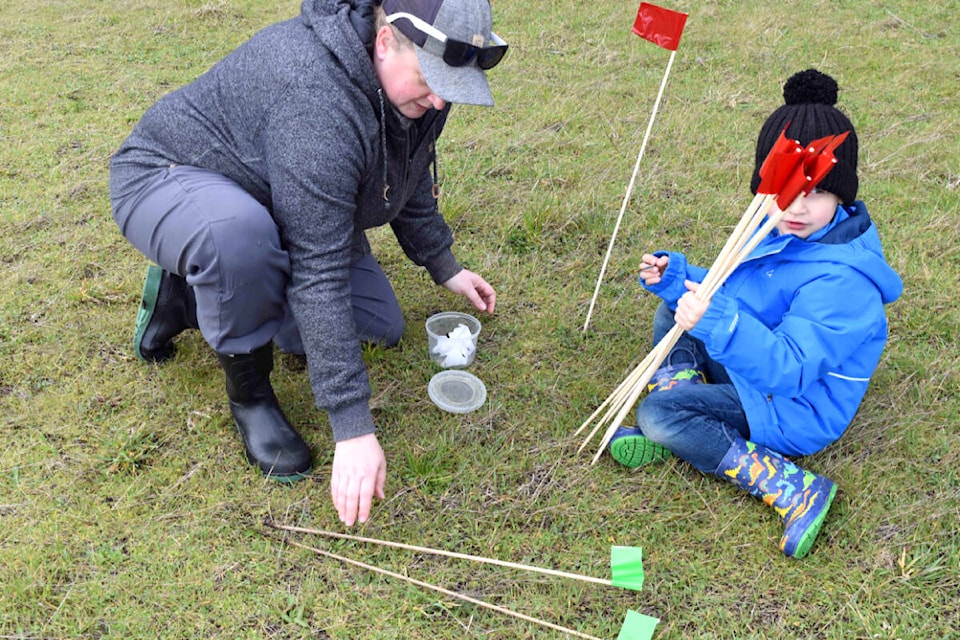Aldergrove’s Vancouver Zoo staff are pretty psyched about some insects.
But not just any bugs. In particular, they’re sharing what they call “amazing” news about their Taylor’s Checkerspot Butterfly program.
For the past five years, the zoo has been involved in a recovery program for the Taylor’s (also known as Edith’s) Checkerspot butterfly (TCB), and those efforts are paying off, said biologist Andrea Gielens, with Wildlife Preservation Canada and the conservation corner at the zoo.
The team “is excited to share some great news,” she chirped.
She and the recovery team just returned earlier late last month from a trip to Helliwell Provincial Park on Hornby Island in the Straight of Juan de Fuca, for the latest release of about 400 larvae.
While they marvelled at spotting sea lions and orcas just off shore during the release, that wasn’t the highlight of the trip.
“Our continued release efforts have resulted in the reintroduction release of more than 9,000 Taylor’s Checkerspot larva into this habitat over the past five years, and we are excited to announce that for this first time since the mid ’90s – more than 25 years ago – there have been Checkerspots able to complete their entire life cycle on Hornby Island,” she said, speaking to the milestone.
Prior to this year, the recovery team had not been able to observe TCB larvae active after their winter butterfly hibernation, prior to what she called their “early spring release of the subsequent group of ex-situ bred animals. This meant it was hard to tell, for sure, that the animals we were observing later in the spring were animals that bred onsite or were the animals we had just released,” Gielens explained.
“Thanks to increased numbers, favourable weather, and the incredible work of field crews, the first confirmed overwintered animals were found, en mass, this spring.”
She confirmed more than 200 larvae were found, “which is a testament both to our released animals and the search effort and skills of the field crew.”
This summer, the zoo will have staff out assisting field crews to do more extensive surveys and hopefully collect more animals for a fresh breeding population of TCB, which will produce more larva for release in summer 2025 or spring 2026.
“So this is great news for our project,” Gielens concluded.
“It’s ultimately what we wanted to see from all the work that we’ve been doing over the last few years. And what we look forward to in the future is continuing to see that population thrive, and to be able to start new populations, to make sure this species of butterfly stays in Canada.”
For more about the project, click here.
IN RECENT ZOO NEWS: New stamp highlights endangered frog dwelling in Aldergrove
